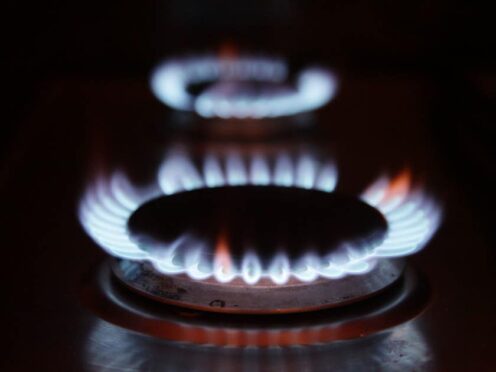
The Government has committed to building new gas power stations to avert what ministers described as the “genuine prospect of blackouts”.
In a speech at Chatham House, Energy Secretary Claire Coutinho will outline the need for unabated gas power in the electricity system beyond 2030, which the Government said would still mean the UK was on track to meet targets to cut emissions to zero overall by 2050.
Ahead of the speech, Rishi Sunak said the UK needed to meet its goals to cut emissions by nearly four-fifths by 2035, on the way to the 2050 goal, in a “sustainable way that doesn’t leave people without energy on a cloudy, windless day”.

But Labour accused the Tories of leaving Britain facing another 10 years of high energy bills and energy security, while think tank the Energy and Climate Intelligence Unit (ECIU) said falling North Sea output would leave the UK ever more dependent on foreign gas.
The plans to boost gas power capacity include broadening existing rules for new plants to be built to be net-zero ready and able to convert to lower-carbon alternatives such as using hydrogen to create power or using carbon capture technology to catch and store emissions.
The Government also said new gas power plants would run less frequently as other low-carbon technologies such as renewables and nuclear are rolled out.
The move is needed as electricity powers a growing share of the economy, with more electric cars on the road and an increase in heat pumps, with flexible power generation as a back-up to renewables, officials said.
The Prime Minister said: “Our record on net zero speaks for itself – the latest stats show that we’re already halfway there, with greenhouse gas emissions 50% lower than in 1990.
“But we need to reach our 2035 goals in a sustainable way that doesn’t leave people without energy on a cloudy, windless day.
“I will not gamble with our energy security. I will make the tough decisions so that no matter what scenario we face, we can always power Britain from Britain.”
In her speech, Ms Coutinho is expected to say: “There are no two ways about it. Without gas backing up renewables, we face the genuine prospect of blackouts.
“Other countries in recent years have been so threatened by supply constraints that they have been forced back to coal.
“There are no easy solutions in energy, only trade-offs. If countries are forced to choose between clean energy and keeping citizens safe and warm, believe me they’ll choose to keep the lights on.
“We will not let ourselves be put in that position. And so, as we continue to move towards clean energy, we must be realistic.”
The Government said the need for continued, unabated, gas generation into the 2030s as a back-up to ensure energy security and reduce costs had been recognised by independent advisers, Climate Change Committee.

But shadow energy secretary Ed Miliband said: “Today, the Energy Secretary has confirmed that, after 14 years of failed Conservative energy policy, under the Tories Britain would face at least another 10 years of high energy bills and energy insecurity because of their plans.
“Of course, we need to replace retiring gas-fired stations as part of a decarbonised power system, which will include carbon capture and hydrogen playing a limited back-up role in the system.
“But the reason the Tories cannot deliver the lower bills and energy security we need is that they are specialists in failure when it comes to our clean energy future: persisting with the ludicrous ban on onshore wind, bungling the offshore wind auctions, and failing on energy efficiency.”
Jess Ralston, energy analyst at ECIU, said: “The North Sea will continue its inevitable decline with or without new licences leaving us ever more dependent on foreign gas unless we lower demand.
“The UK is going backwards on energy security because of the Government fumbling its latest auction for British offshore wind farms, failing on its home insulation schemes and dithering on heat pumps.
“Without carbon capture technology, these gas plants may only have a decade or two before they are decommissioned, and who’s going to pay for that?”
Doug Parr, policy director at Greenpeace UK, said: “The Government’s cunning plan to boost energy security and meet our climate goals is to make Britain more dependent on the very fossil fuel that sent our bills rocketing and the planet’s temperature soaring.
“The only route to a low-cost, secure and clean energy system is through attracting massive private investment to develop renewables and upgrade our aging grid, but this government has failed on both fronts.”
The backing for gas is part of the second consultation on the review of electricity market arrangements, which also includes proposals for different wholesale prices in different regions to better match supply and demand, which the Government argues would bring down costs for consumers across the country.

Enjoy the convenience of having The Sunday Post delivered as a digital ePaper straight to your smartphone, tablet or computer.
Subscribe for only £5.49 a month and enjoy all the benefits of the printed paper as a digital replica.
Subscribe